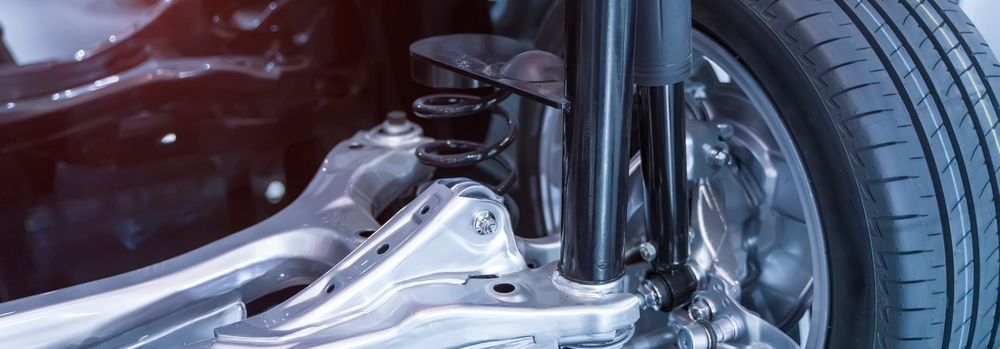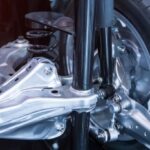
20 Dec The Ups And Downs of Auto Suspension: Troubleshooting Tips
 I rode in a friend’s car the other day, and by the end of the trip, I felt like I spent an hour on a carnival ride. Now, don’t get me wrong, I don’t usually get car sick. But the excess swaying and rolling left me a bit green under the gills, if you know what I mean. If the ride quality of your car includes excessive rocking, schedule a auto suspension service to check out the shocks and struts. Because your daily commute shouldn’t feel like a roller coaster ride.
I rode in a friend’s car the other day, and by the end of the trip, I felt like I spent an hour on a carnival ride. Now, don’t get me wrong, I don’t usually get car sick. But the excess swaying and rolling left me a bit green under the gills, if you know what I mean. If the ride quality of your car includes excessive rocking, schedule a auto suspension service to check out the shocks and struts. Because your daily commute shouldn’t feel like a roller coaster ride.
How Vehicle Suspension Works
The suspension system is responsible for ride quality and is an integral part of the chassis. It supports a vehicle’s weight, absorbs and dampens shock, and helps the tires maintain traction. Most drivers don’t notice when their suspension system starts failing since it occurs slowly. We automatically compensate for any extra sway, bounce, or roll by steering through it and braking more aggressively. Unfortunately, this can strain our vehicle’s suspension and steering components more. Let’s review what all these parts do and how they work.
Shock Absorbers
The shock absorber or ‘shocks’ control your vehicle’s up and down movements through a piston, piston rod, and valve filled with hydraulic fluid. They help reduce bouncing, swaying, and other excessive movements while braking, turning, and accelerating. It’s important to note that conventional shock absorbers do not support vehicle weight. Properly working shocks assist your vehicle in quickly responding and recovering from directional changes, acceleration, and braking actions. Over time and use the shock components wear out and require replacement.
Struts
Struts are structural components of the suspension system and provide structural support. They hold up the spring, keep the wheel in position, and support much of the side load on the vehicle’s suspension. They perform a damping function similar to shocks, absorbing excessive up & down movements through a piston, piston rod, and valve filled with fluid. However, struts are velocity-sensitive, so the resistance increases or decreases based on the rate of the suspension movement. Struts do wear out over time and require replacement.
Strut Mounts
Strut mounts are brackets with flexible rubber centers that attach struts to the chassis. They act as a cushion to help reduce road vibrations and tire noise. Some strut mounts may also contain a bearing or bearing plate that operates as a steering pivot. These bearings are an important component that can affect the response and steadiness of steering movement. Always replace strut mounts whenever you replace or upgrade the shocks or struts.
Springs
Most modern vehicle’s use one of four basic spring designs:
- Coil springs: This most common design is a heavy-duty torsion bar coiled around an axis. They flatten and expand to help absorb the motion of the wheels.
- Leaf springs: Several layers of metal (called “leaves”) are bound together to act as a single unit. Most American automobiles used leaf springs until 1985. They are still utilized today on full-size trucks and heavy-duty vehicles.
- Torsion bars: They use the twisting properties of a steel bar to provide coil-spring-like performance. One end of the bar attaches to the vehicle frame, and the other end connects to a wishbone, which acts like a lever moving perpendicular to it. The torsion bar twists along its axis to provide the spring force. Auto Manufacturers used this system throughout the 1950s and 1960s.
- Air springs: A cylindrical chamber of compressed air between the wheel and the vehicle’s body absorbs wheel vibrations. This type is used in many luxury vehicles today.
Steering System
The steering system guides your vehicle in the direction you indicate with the steering wheel. Worn or damaged shocks or struts make steering less reliable. Issues like ‘car roll’ when turning, ‘nose dive’ when braking, and ‘swaying’ when driving straight indicate your vehicle’s shocks and/or struts require service.
Braking System
The braking system includes all the components that slow and stop your vehicle. There are several types of brake systems. With traditional braking (disc or drum), when you engage the brake pedal, the force from your foot is increased through hydraulic fluid to the brake pad or shoe. When you engage the brake pedal with regenerative braking, the vehicle’s electric motor goes into reverse mode (or runs backward), thus slowing the wheels. Worn suspension parts may strain your vehicle’s braking system since slowing and stopping a vehicle that sways back and forth or up and down requires more energy.
Tires & Wheels
Our vehicle’s tires and wheels make motion possible through friction with the road surface. They are the contact point between the ground and your automobile. So, our vehicle’s tires often show suspension issues through tread wear patterns. For example, tires experience more wear and damage when compensating for faulty shocks or bent axles. Warning signs include uneven tread-wear, bald spots, cupping, and frequent tire replacements.
Suspension Rocking & Rolling: Troubleshooting Tips
Knowing what the suspension components do and how they contribute to vehicle safety and ride quality, let’s troubleshoot. Note the instances when your ride quality suffers. How does your vehicle react? For example, does it rock side-to-side for a bit after driving around a corner? Does it pitch forward and back a few times after braking? Does one side or corner appear lower than the others? All this information should help you determine which components require a deeper inspection and service.
Ride Quality
When driving on a smooth road, your ride quality should be excellent – smooth and comfortable without noticeable bouncing, rocking, or rolling. Schedule a suspension service if your ride quality becomes rougher or you hear knocks when driving over bumps or cornering.
Mileage & Use Intervals
Every car on the road has factory-recommend, routine maintenance requirements. When was the last time you scheduled a suspension service? Is your vehicle overdue? I keep track of all my car service appointments on my phone, so I know when I have them done and which ones are coming up. If you’re more old school, grab a small notepad and write down your service appointments to keep in your glovebox. Your vehicle’s shocks and struts generally last about 50,000 miles. However, certain driving conditions may necessitate more frequent service and replacements.
- Driving off-road
- Towing heavy loads
- Performance upgrades
Read your owner’s manual for the factory-recommended service interval for your vehicle make & model. Always stick to your routine maintenance schedule and adjust when necessary to ensure your safety and automobile longevity.
Physical Inspections
Physically inspecting your vehicle’s suspension components may reveal a need for repairs or replacements. Look for signs of wear, damage, or leaking fluids:
- Broken springs
- Corrosion or rust on shocks or struts
- Excessive rocking front-to-back, or rolling side-to-side while driving
- Knocking, grinding, or rattling noises
- Leaking hydraulic fluid from the shocks or struts
- Missing or loose mounting brackets
- Uneven, excessive, or cupped tire tread wear
If you feel unequal to this task, visit your local auto service center.
Suspension Service in Ann Arbor, MI
Ron’s Garage has served Ann Arbor, MI, and surrounding Saline, Dexter, and Pittsfield Township areas since 1982. We provide professional automotive services at a fair price, emphasizing customer satisfaction. Our ASE-certified technicians use state-of-the-art tools and equipment for diagnostic services, repairs, and replacements. If you suspect your vehicle suspension is responsible for rocking, we will inspect the shocks, struts, and other parts to resolve the issue.
Schedule Service
Call us today at (734) 961-4701 or visit our website to schedule an appointment. And be sure to check out our service specials!

